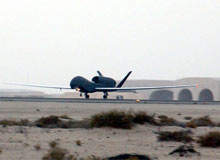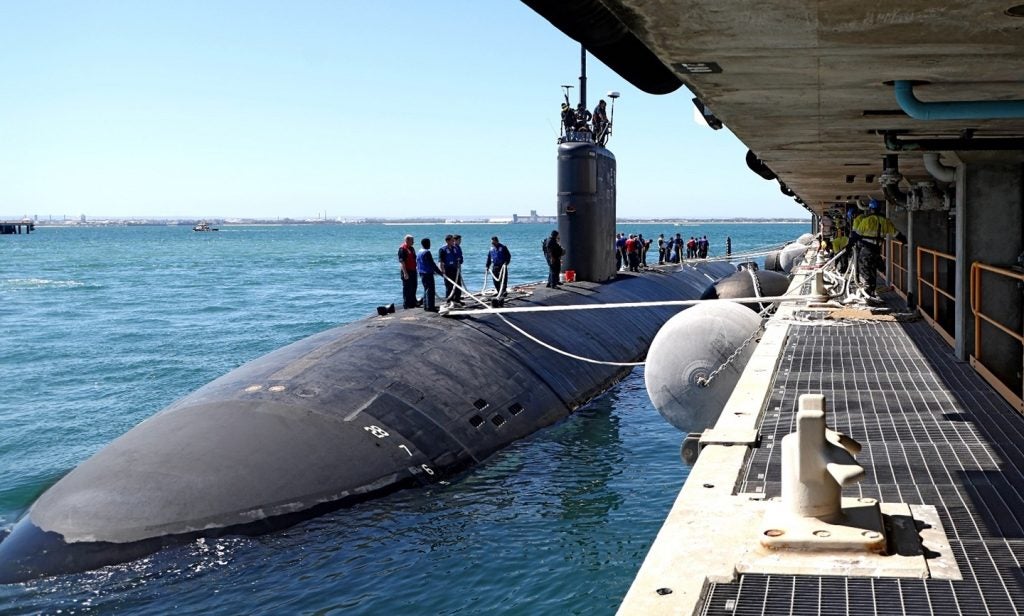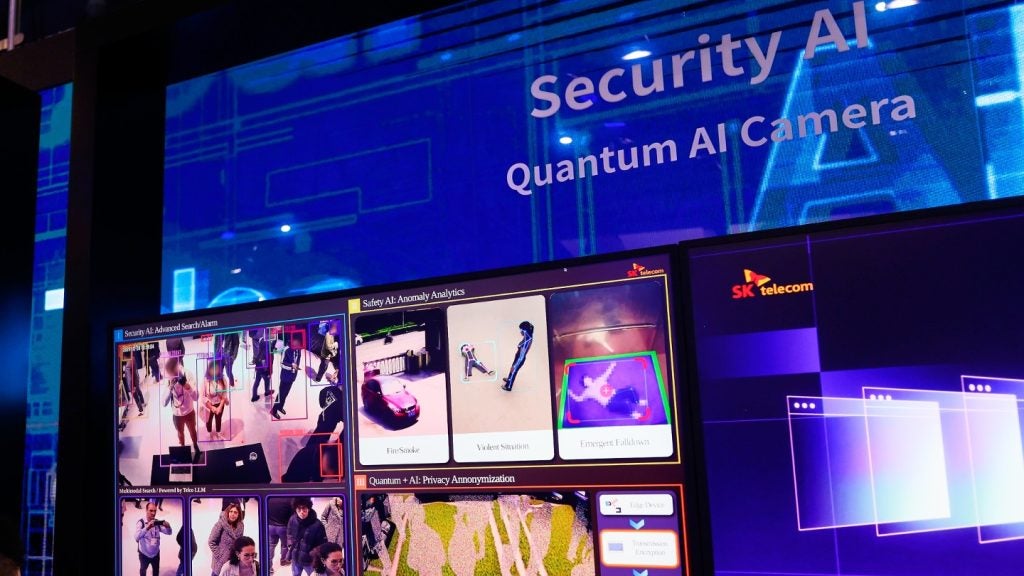
You know that a weapon is the next big thing when a country’s military services start fighting each other for control of it.
Back in March of 2007, General Michael Moseley, chief of staff of the United States Air Force, proposed that the USAF become the primary manager of all medium- and high-altitude unmanned aerial vehicle (UAV) programmes under the Pentagon’s aegis.
Not surprisingly, the US Army and Navy objected to this idea, but the opposition was reportedly much more vehement than the reflexive response typical of inter-service rivalry.
Indeed, there is much to fight about. Pentagon UAV spending totalled $760m in the 2002 financial year; five years later, acquisition costs alone for the six UAV systems currently in production totalled $1.65bn, and observers estimate that total UAV spending will grow to over $3bn by the end of the decade. The Pentagon currently has over a hundred UAV programmes in operation, development, or qualification, and each service has at least one system in operation.
The issue of allocating UAV systems and missions among the services goes hand in hand with the expansion of the UAV operational envelope. In the future, this issue could well converge with questions surrounding the emergence of hypersonic, quasi-orbital, and space technologies, not to mention broader concepts such as nanotechnology.
DEFINITIONS
How well do you really know your competitors?
Access the most comprehensive Company Profiles on the market, powered by GlobalData. Save hours of research. Gain competitive edge.

Thank you!
Your download email will arrive shortly
Not ready to buy yet? Download a free sample
We are confident about the unique quality of our Company Profiles. However, we want you to make the most beneficial decision for your business, so we offer a free sample that you can download by submitting the below form
By GlobalDataGiven the ongoing proliferation of manmade aerial objects, defining the UAV is not as simplistic as knowing that the ‘U’ stands for unmanned. Technically, UAVs have three defining characteristics.
First, they are continuously propelled by their own aircraft-style engine – a turbine or piston engine that draws its oxidiser from the atmosphere, unlike a glider, rocket, bomb or artillery shell. Second, they are capable of both sustained level flight and adjustable aerial manoeuvres, unlike a ballistic missile or a satellite. Third, they are reusable because they can execute controlled landings, unlike cruise missiles and other flying weapons.
More holistically, UAVs are basically flying robots, but being unmanned doesn’t make them unpiloted. Unlike the ‘Robot 1.0’ generation of assembly-line riveters and self-propelled floor vacuums, which were fully autonomous within a very narrow range of actions, the current ‘Robot 2.0’ UAV cohort is remotely controlled by humans but can undertake a wide and rapidly expanding range of actions.
This distinction will become increasingly important as ‘systems of systems’ such as the army’s future combat systems employ robots capable of adaptive, proactive, and cooperative behaviour. In fact, the Pentagon’s technical term for the UAV is unmanned aerial systems, or UAS, which comprises not only the aerial vehicle but also the ground control station, the human operators, and the mobile containers used to transport the UAVs and ground equipment.
A UAS unit generally comprises more than one UAV; for example, a USAF Predator unit contains four UAVs.
TECHNOLOGICAL EVOLUTION
Contrary to popular belief, unmanned flight is almost as old as mechanical flight itself. In fact, the first successful UAV flight occurred in England in 1917 (this flight was analogous to the Wright Brothers’ original 1903 breakthrough at Kitty Hawk).
Allied air forces used training drones frequently in World War II, and mindful of the 1960 U-2 incident, when an American spy plane was shot down over the Soviet Union forcing the nation to admit the purpose of the vehicle, the US employed a supersonic drone for high-altitude surveillance of a Chinese nuclear test site in 1969.
However, early drones were unreliable and usually ended up crashing – hence their use as practice targets in the mid-20th century. To be useful, moreover, payloads had to be fairly heavy and bulky, which in turn exacerbated the in-flight control problem. At root, the conceptual reach of the UAV vision exceeded its grasp until communications, electronics, and information technologies reached critical mass by the 1980s. In particular, three problems had to be solved:
First, ground operators had to be able to communicate with UAVs securely, reliably (despite jamming attempts) and ‘over the horizon’ (without needing unobstructed line of sight). Key enabling capabilities in this respect included digitalised transmissions, refined communications techniques such as spread spectrum and the proliferation of increasingly advanced communications satellites.
Additionally, the UAV had to be able to give the operator critical feedback instantaneously. The key process here was improving the output-to-size ratio for the avionic and power suites on board the UAV.
Once the pilot and the remote vehicle could communicate, aerodynamic control, or the actual management of the manoeuvring surfaces, had to become automated. In fact, the first ‘fly-by-wire’ aircraft was the truly revolutionary F-16, which made its public debut in 1976. Over the next decade, the scope of the computer interface between pilot and vehicle grew steadily.
FURTHER IMPROVEMENTS
Once engineers solved these mission-critical challenges, further technological advances, such as small lightweight turbofan engines, synthetic aperture radar, and global positioning systems (GPS), yielded improvements of a degree that nevertheless proved highly valuable. These improvements came relatively quickly for two reasons.
First, the removal of the pilot from the airframe freed up a lot of design slack that could be allocated to increasing payload and decreasing size. Second, the gen 2.0 missions for which the UAV was designed required relatively modest propulsion output and airframe tensile strength.
Consequently, engineers enjoyed a virtuous design and innovation cycle in which greater component efficiency reduced size and cost while still allowing UAVs to pack in more capability. For example, most UAVs are constructed primarily from composite materials such as carbon fibre, with lightweight aluminium acting as skeleton and stiffener.
Because the United States did not engage in a truly ‘hot’ conventional war from 1973 until 1990, the cumulative technological evolution flew under the radar, as it were.
The Pentagon’s Defense Advanced Research Projects Agency (DARPA) secretly began investigating the modern UAV concept in the early 1980s, probably spurred by the deployment of the short-range Scout UAV by Israel Aircraft Industries (IAI) in 1979.
The USA’s first operational UAV was the RQ-2 Pioneer, an upgrade of the Scout built by IAI in conjunction with AAI Corporation. Ironically, the Pioneer originally belonged to the US Navy, which subsequently became the most conservative of the three services in adopting UAV technology. The Pioneer first flew in 1985, and was the only UAV available for use during Operation Desert Storm in 1991.
Based on its own research, DARPA contracted with Leading Systems Inc. to produce a medium-range UAV in 1984. The result was the Amber, which had the basic characteristics of gen 2.0. The Amber successfully navigated an increasingly difficult series of flight tests until the programme was cancelled for budgetary reasons in 1989, as part of the general post-Cold War demobilisation.
However, the Amber concept lived on in the form of the Gnat-750, an experimental test bed that generated several enhancements. Critically, the CIA used the Gnat for live covert operations following the protracted breakup of the former Yugoslav states in the mid-1990s. Although at least one unit was lost, DARPA gained valuable feedback on UAV performance under virtual combat conditions.
After the validation of the UAV concept in the Balkan and Iraqi environments, 1994 was a watershed year for UAV development. That year, the USAF awarded demonstration contracts for what are now its front-line UAV systems, the RQ-1 Predator and the RQ-4 Global Hawk, as well as other candidates such as the RQ-3 Dark Star.
Since 9/11, UAVs have prominently featured in military reporting from the Middle East. As far back as February 2002, a CIA-operated Predator conducted the first remote attack operation when it killed three suspected al-Qaeda terrorists with a Hellfire missile. The uniformed services have subsequently incorporated UAVs into their tactical operations – close to the point where commanders ask “Where are the UAVs?” the way US presidents in times of crisis ask the JCS “Where are the carriers?”
UAV CLASSIFICATION
As with any new weapons category, classifications are fairly fluid. Gen 2.0 UAV parameters initially included altitude and endurance, as in ‘high altitude, long endurance’ (HALE). However, endurance and altitude tend to correlate with each other, and with size, for a variety of technical and operational reasons.
The USAF classifies its UAV profiles into tiers based on altitude, but other factors make this system somewhat eclectic. Starting from ground level:
Tier N/A by default covers small / micro UAVs such as the BATMAV system built around Aerovironment’s Wasp. With an outright range of roughly five miles, a weight of under 1lb, and a wingspan of less than 2ft, this system has a ceiling of around 1,000ft and endurance of an hour. Perhaps the USAF should designate this profile as tier zero, insofar as some UAVs on the drawing board are literally insect-sized.
Tier 1 (from which Tier 0 was carved out) covers the low-altitude layer up to jet-stream altitudes of around 30,000ft. Alternatively, Tier one stops at the lower end of the tropopause, the somewhat variable five-mile boundary zone between the troposphere and the stratosphere. Sustainability in this layer was the goal of early models such as the Gnat, which in its current improved version has a 500lb empty weight, a 35ft wingspan, a top speed of 160mph and endurance of 48 hours.
Tier 2, which extends to an altitude of roughly 50,000ft, essentially comprises the tropopause. Although jet streams are strongest in this range, weather rarely reaches this high, making it an excellent cruising altitude for Cessna-sized UAVs such as the Predator, which is formally classified as a MALE (medium altitude, long endurance) UAV. Interestingly, even though it weighs 950lb empty and spans 48ft, the Predator’s aerial performance envelope is roughly equivalent to the Gnat’s. However, the Predator’s payload at 1,300lb is more than double that of the Gnat’s, and its mission capability is much greater.
Tier 2+ encompasses the lowest slice of the stratosphere – up to about 70,000ft in altitude. Drag is noticeably lower at this altitude, but UAVs generally require more wing area and turbofan engines to generate the necessary lift. As a result, UAVs flying in this tier, such as the Global Hawk, receive the HALE classification. Despite the similarity to the tier two profile implied by the plus sign, the Global Hawk’s wingspan is actually close to 2.5 times that of the Predator, and it weighs 14 times as much. In return, the Global Hawk has a top speed of 400mph, can stay aloft 36 hours straight and can carry ten times the payload of a Predator.
Tier 3- is a misnomer, as it actually refers to stealthy UAVs, such as Dark Star, flying in the tier 2+ altitude zone. The Dark Star was originally an experimental competitor of the Global Hawk, but has since been modified with stealth characteristics. As was true of the F-117 and B-2 in their early deployments, the Pentagon is loath to even confirm the existence of operational stealth UAVs, let alone their current specs.
As the lack of a consistent naming convention indicates, the tier system is neither universal nor immutable. Even within the US military, each of the other services defines its tiers differently. More importantly, advances in stratospheric and hypersonic flight technology will most likely create new stratospheric tiers. Much room exists for such layers given that the stratosphere tops out at 165,000ft; to put this in perspective, satellites in low orbit have perigees in the mid-ionosphere, about 100 miles up.
MISSIONS AND CAPABILITIES
The USAF also names UAVs based on mission capability. Prior to this decade, this issue was trivial because UAVs only performed surveillance roles, which is why most UAVs on the books have appellations starting with ‘R’ for reconnaissance. Since 2001, however, General Atomics has upgraded the Predator to carry Hellfire AGMs, Stinger AAMs, and the Viper Strike guided bomb. The USAF gives attack-capable UAVs the ‘M’ designation; consequently, the Predator comes in RQ-1 and MQ-1 versions.
Roles can be as flexible as tiers, however. UAVs can be configured to act as communications relay units for other units that are over the horizon and have no access to satellite relays. Moreover, the USAF appears to be combining certain roles, if the next-generation Predator, known colloquially as the Reaper, is any indication. All Reapers will have attack capability, which is why the class has only one designation, MQ-9.
More broadly, most attack roles presuppose onboard surveillance capability. Baseline reconnaissance UAV packages from tier one upward include synthetic aperture radar optimised for ground search and an electro-optical camera with infrared and day / night visible spectrum capability (the operator uses a separate navigational camera to fly the UAV).
Given that the both the munitions and the UAV itself are remotely guidable, it’s not much of a stretch to remote guide the munitions from the UAV – in effect, the vehicle itself acts as a relay link between operator and munition.
To date, though, the RQ-4 Global Hawk has not transitioned into the attack role; instead, the USAF has used it as an expanded intelligence-gathering platform. The ‘B’ version carries extra signals and electronic intelligence packages, turning it into the remote analogue of the original U-2.
In our second instalment of this article, we will ask what the future prospects are for unmanned aerial vehicles and look more at the criticism and constraints that surround further adoption for military use.






